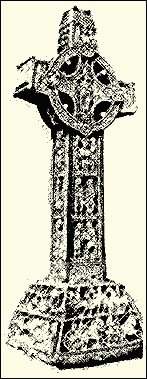| The Old Town | ||
 |
Archaeologists tell us that the first settlers did not arrive in Ireland until around 8000 BC during the period known as the Mesolithic age. This comparatively late event in pre-history is probably due to the last Ice Age. One of the most famous sites from this era is Mount Sandel near Coleraine just outside the modern Limavady Borough. The standing stones and small stone circles that dot the Limavady area landscape are remnants of the Neolithic period from about 4000 BC. Limavady town itself and many of the surrounding villages have Celtic roots. No one knows for sure just how old the original settlement of Limavady is. The Celts first arrived in Ireland about 350 BC and settlements in the Banagher area of the Limavady Borough date from before the 5th century AD. One of the earliest records describe how Saint Columbkille presided over a Convention at Mullagh Hill, just outside the modern town in 575 AD to determine the future of the Irish Colony that had settled in the South West of Scotland. |
||||
|
Celtic Ireland was divided into a number of small tuaths or kingdoms each ruled by a family or Clan Chief. The predominate clan in the Limavady area, from the 12th century until the 17th was called O'Cahan. The Gaelic name for O'Cahan's kingdom, which probably originates long before the twelfth century was Ciannachta. Today the site of O'Cahan's castle, around which the old town was sited, can be seen in the Roe Valley Country Park. Just upstream from the castle is where legend tells us that a faithful hound of one of the O'Cahan chiefs jumped a gorge on the River Roe to get help during an unexpected enemy attack. Thus giving rise to the name "Leim an Mhadaidh" which means leap of the dog and is today anglicised as Limavady. |
 |